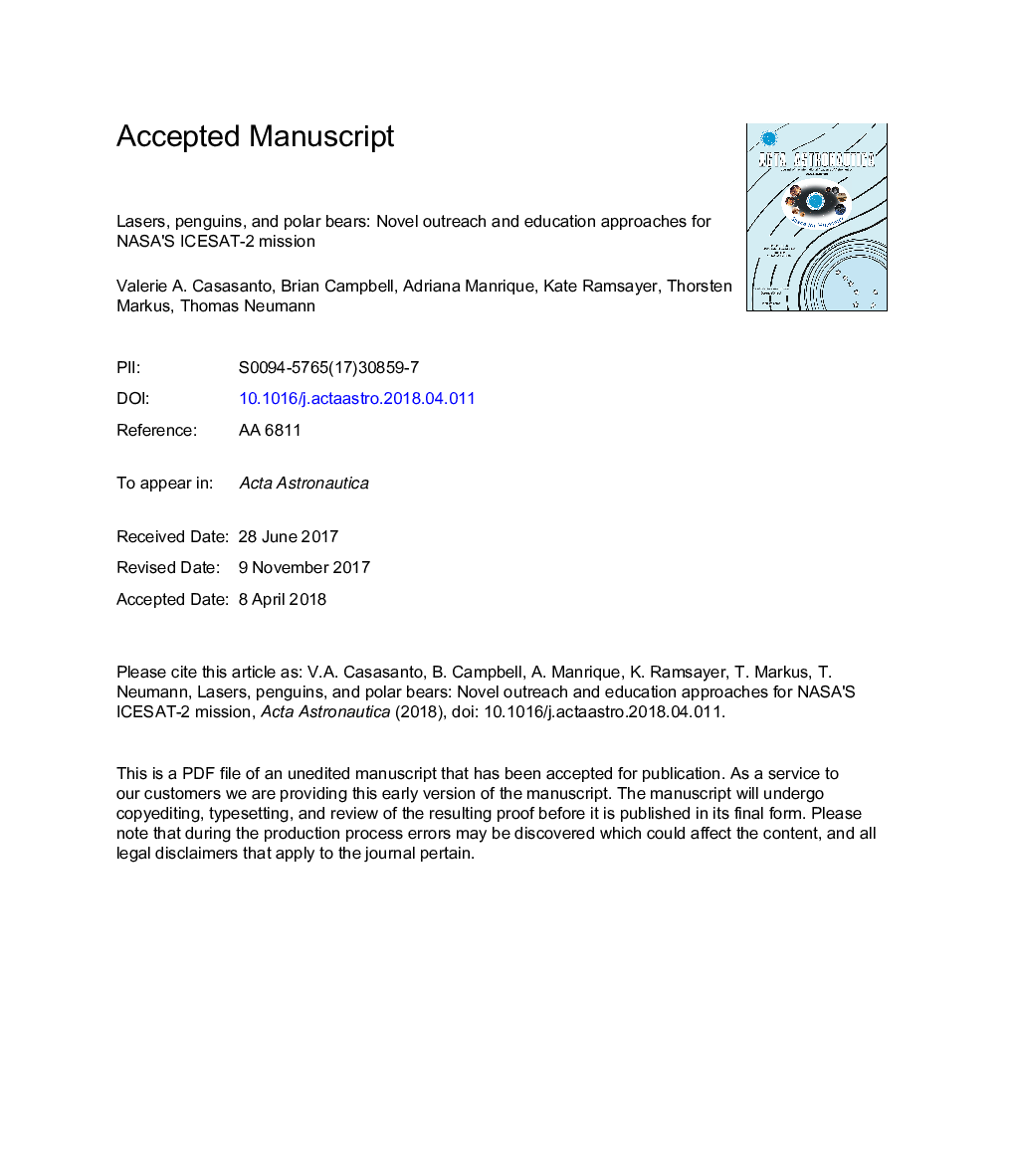| Article ID | Journal | Published Year | Pages | File Type |
|---|---|---|---|---|
| 8055520 | Acta Astronautica | 2018 | 12 Pages |
Abstract
NASA's Ice, Cloud, and land Elevation Satellite (ICESat-2), to be launched in 2018, will measure the height of Earth from space using lasers, collecting the most precise and detailed account yet of our planet's elevation. The mission will allow scientists to investigate how global warming is changing the planet's icy polar regions and to take stock of Earth's vegetation. ICESat-2's emphasis on polar ice, as well as its unique measurement approach, will provide an intriguing and accessible focus for the mission's education and outreach programs. Sea ice and land ice are areas that have experienced significant change in recent years. It is key to communicate why we are measuring these areas and their importance. ICESat-2 science data will provide much-needed answers to climate change questions such as, “Is the ice really melting in the polar regions?” and “What does studying Earth's frozen regions tell us about our changing climate?” In this paper, lessons-learned and novel techniques for engaging and educating all audiences in the mission will be discussed, such as including results of a unique collaboration with art design school the Savannah College of Art Design (SCAD) to create fun and exciting products such as animated characters and interactive stories. Future collaborations with wildlife researchers, a new citizen science program in collaboration with GLOBE, and evidence from other STEAM (Science, Technology, Engineering, Arts, Math) education approaches will also be detailed in this paper.
Related Topics
Physical Sciences and Engineering
Engineering
Aerospace Engineering
Authors
Valerie A. Casasanto, Brian Campbell, Adriana Manrique, Kate Ramsayer, Thorsten Markus, Thomas Neumann,
